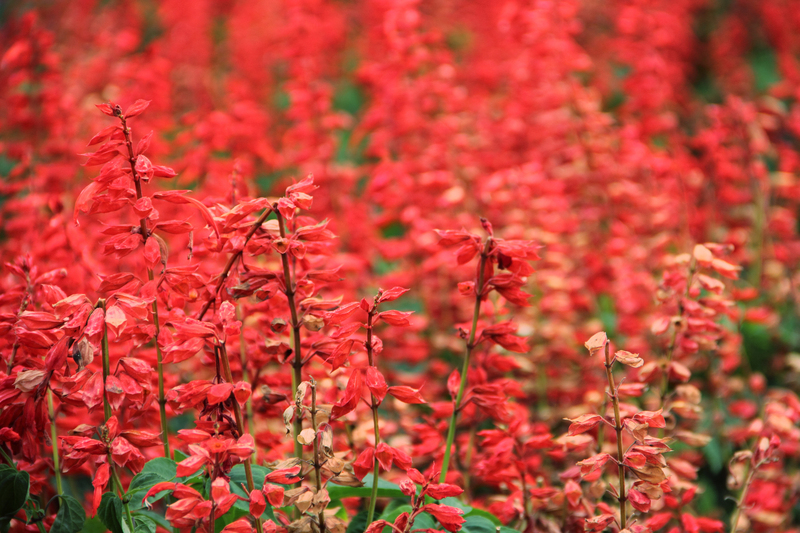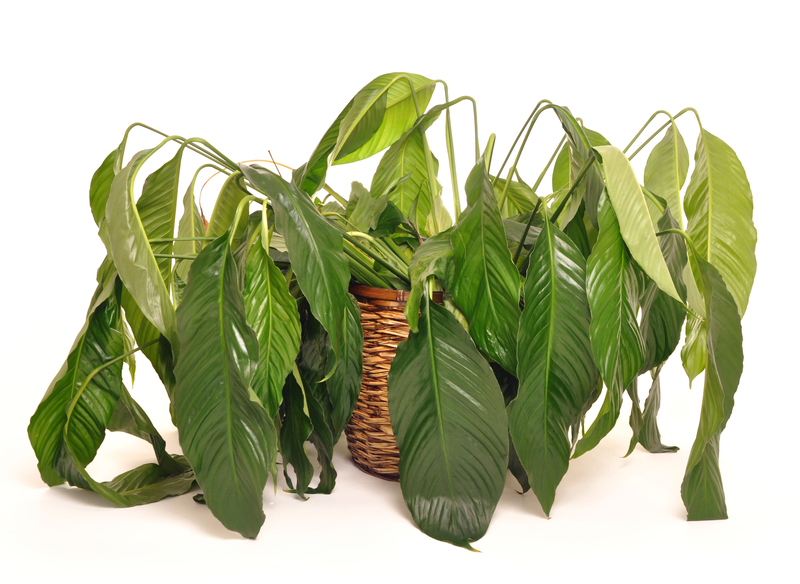Window Box Plant Trends: Favorites Among Garden Designers
Window boxes are more than a decorative flourish; they're a showcase for creativity and the latest gardening trends. As urban spaces shrink and curb appeal becomes a priority, garden designers are innovating with an exciting range of plants, colors, and styles for window boxes. In this comprehensive article, we'll explore the current window box plant trends, sharing expert designer tips, plant combinations, and proven favorites to brighten any ledge or sill. Whether you're a DIY enthusiast or seeking professional advice, read on to transform your windows into vibrant focal points.
Why Window Box Plants Matter in Modern Garden Design
With cities getting denser, outdoor spaces are at a premium. A creatively planted window box can:
- Bring greenery and life to every urban dwelling
- Improve curb appeal and property value
- Offer a personal touch, showcasing the resident's tastes and gardening skills
- Support urban biodiversity by attracting pollinators
Garden designers are quick to embrace unique window box plantings as a way to extend landscape design upward, making the most of vertical real estate. Let's look at the trends shaping window box plant choices today.

Window Box Plant Trends: Changing Palettes and Styles
1. Seasonal Rotations and Everlasting Color
There's a shift away from static, single-plant window boxes. Garden designers now favor dynamic, rotating displays that evolve with the seasons. This approach not only maintains year-round interest but also utilizes plants at their best.
Popular combinations include:
- Spring: Tulips, daffodils, violas, and pansies for vibrant early color.
- Summer: Petunias, verbena, calibrachoa, and trailing lobelia.
- Fall: Ornamental cabbages, pansies, sedums, and heucheras.
- Winter: Dwarf evergreens, ivy, and hellebores for structure and longevity.
2. Foliage Finesse: Texture Over Flowers
Many leading designers are experimenting with foliage-first plantings. The result? Window boxes with a textural richness and subtle color play from leaves rather than blooms. Key foliage plants include:
- Heuchera cultivars (coral bells) - for ruffled leaves in burgundy, caramel, and lime-green shades.
- Ferns - especially in shaded windows.
- Lamb's Ear (Stachys byzantina) - with its velvety silver leaves.
- Ornamental grasses - like Carex and Festuca for structure and movement.
Foliage-dominated window boxes look fresh throughout the season and pair well with minimalistic architectural styles, a favorite among contemporary garden designers.
3. Edibles in Window Boxes: Tasty Trends
The edible gardening movement is spilling over into window box plant trends. Designers are increasingly incorporating herbs, compact vegetables, and even small fruiting plants. Favorites include:
- Basil, thyme, and parsley - classic culinary herbs that look and smell wonderful.
- Lettuce and salad greens - cut-and-come-again varieties add lushness and are easy to harvest.
- Strawberries (alpine or trailing types) - an ornamental and productive window box choice.
- Chili peppers - their brightly colored fruits provide great visual interest.
Edible window boxes delight city dwellers craving a taste of garden-fresh ingredients right outside their kitchen window.
4. Low-Maintenance and Drought-Tolerant Plantings
With sustainability top-of-mind, window box trends lean toward tough, water-wise choices that thrive despite irregular care. Xeriscaping principles are making their way to the smallest container gardens.
- Succulents like sedum, echeveria, hens-and-chicks, and sempervivum are particularly well-suited to sunny, dry windowsills.
- Lavender and rosemary offer both drought-tolerance and pleasing fragrances.
- Trailing ice plant (Delosperma) brings vivid blooms and exceptional heat-resistance.
Savvy garden designers mix textures and heights for a cool, Mediterranean look that demands little in return.
5. Native Plants for Wildlife Support
Growing awareness of urban biodiversity is shaping window box trending plants. Native selections attract pollinators like bees and butterflies, contributing to a healthy city ecosystem.
- Coreopsis, coneflowers, and Black-eyed Susans - compact varieties flower for months and attract beneficial insects.
- Salvia and Agastache - hummingbird favorites with a vertical form perfect for window displays.
- Milkweed (Asclepias) - supports monarch butterfly larvae even in small boxes.
Many garden designers now make a point to include at least one pollinator-friendly native in every window box composition.
6. Monochrome Magic & Bold Color Statements
For maximum impact, some designers focus on single-color schemes or bold, repeating patterns. Monochromatic plantings can be both soothing and dramatic:
- All-white window boxes: combine white petunias, bacopa, and verbena for a classic look.
- Deep purples and dark reds: using heuchera, coleus, and trailing lobelia.
- Fire tones: oranges, reds, and yellows with marigolds, calibrachoa, and zinnias.
Unifying colors amplifies curb-side appeal and works well with both historic and modern architecture.
Garden Designer Favorites: Standout Window Box Plants
While trends vary, some plants remain perennial favorites among the world's leading window box designers. Here are the top picks and why they keep getting chosen:
Pelargonium (Geranium)
- Unmatched for their long blooming period, durability, and wide color range.
- Modern varieties trail or form neat mounds for versatile arrangements.
Calibrachoa (Million Bells)
- Mini petunia-like blooms in abundant, cascading clusters.
- Ideal for filling out the middle or spilling over the edge of boxes.
Bacopa
- Small, lovely flowers with a trailing habit perfect for softening window box edges.
- Tolerant of sun and partial shade, making it versatile.
Ivy (Hedera helix)
- The classic "spiller" in the thriller-filler-spiller formula for containers.
- Evergreen and resilient, bringing architecture and continuity to plantings.
Begonia - Especially 'Dragon Wing' and Tuberous Types
- Shade-tolerant and with lush, tropical looks.
- Floriferous from spring until frost with minimal care.
Pansy and Viola
- Essential for cool season window boxes - early spring and late fall bloomers.
- Wide array of colors and charming faces to brighten gloomy days.
How Garden Designers Select Window Box Plants
The best plantings don't happen by accident! Here's how professional designers approach window box planting trends for maximum impact:
- Site Analysis: Sun exposure, wind conditions, and watering access dictate plant selection. Some window sills roast in summer sun; others stay cool and shady.
- Architectural Harmony: Plant shapes and colors are chosen to complement the home's style, color, and proportions.
- Maintenance Level: Busy homeowners benefit from drought-tolerant, self-cleaning, or self-seeding plants.
- Thriller-Filler-Spiller Formula: Designers often use a tall "thriller" plant for height, "fillers" for mass and color, and "spillers" to drape over the container's edge.
- Purposeful Planting: Some boxes are designed for fragrance, wildlife support, privacy, or edible harvests.
Expert Tip: Most window boxes perform best with a mixture of sun-lovers and shade-tolerant plants so you can rotate them as the seasons (and sun angles) change. Install a light soil mix and consider a slow-release fertilizer for longer-lasting displays.
Window Box Styling Trends
1. Mixed Heights and Spillover
Instead of symmetrical plantings, modern window box designs are embracing a relaxed, "overflowing" look--letting trailing plants cascade and contrasting heights rise together.
2. Native and Ecological Boxes
Eco-conscious designers are using native species and eliminating synthetic materials for a sustainable statement box that supports beneficial insects and birds.
3. Low-Maintenance Chic
Low-water succulents, evergreens, and ornamental grasses make stylish statements without demanding much care--perfect for busy urbanites or second homes.
4. Custom Color Schemes
Rather than relying on pre-mixed bedding packs, window box aficionados now consult the property's colors for highly personalized, impactful schemes. Think matching shutters, doors, or outdoor furniture.
Best Practices for Stunning Window Box Success
- Proper Drainage: Ensure water can escape--roots rot easily in soggy soil.
- Regular Deadheading: Removing spent blooms encourages rebloom and a tidy appearance.
- Consistent Watering: Window boxes dry out quickly, especially in summer. Consider self-watering inserts if you travel frequently.
- Rotate for Sun: If possible, rotate or change plantings as sun angles and seasons shift.
- Fertilize Wisely: Liquid food every two weeks keeps high-demand annuals flowering prolifically.

Future Window Box Plant Trends
The next wave of trends among garden designers is pointing towards further innovations:
- Smart Window Boxes: Integration of watering sensors and app-controlled irrigation.
- Bio-diverse Mini-Habitats: Creating micro-ecosystems with mosses, lichens, and rare pollinator-friendly species.
- Unusual Edibles: Expect to see dwarf blueberries, mini-tomatoes, and specialty herbs like shiso and lemon verbena making appearances.
- Climate-Adaptive Planting: Using climate-resilient species as weather becomes less predictable.
- Upcycled and Artistic Containers: Creative containers are trending as much as the plants themselves!
Conclusion: Window Box Plant Trends in 2024 and Beyond
Window box plant trends continue to evolve, reflecting wider movements in gardening, sustainability, and design. Whether you prefer a timeless palette of geraniums and ivy or a bold, textural collage of native perennials and succulents, today's window boxes offer immense scope for creativity.
Garden designers agree: the best window box is one that delights its owner, complements its setting, and thrives with minimal fuss. With these window box favorites among garden designers, you're ready to create a stunning showcase that's sure to catch the eye--and maybe even inspire the neighborhood.
- Embrace seasonality: Change out plantings for year-round interest.
- Experiment with texture: Mix foliage shapes, sizes, and finishes for depth.
- Support nature: Add natives and pollinator-friendly flowers for wildlife.
- Keep it practical: Ensure the right plant fits the right spot for trouble-free beauty.
By staying up to date with window box plant trends and listening to the favorites among top garden designers, your home's windows can become a living art installation season after season.
```